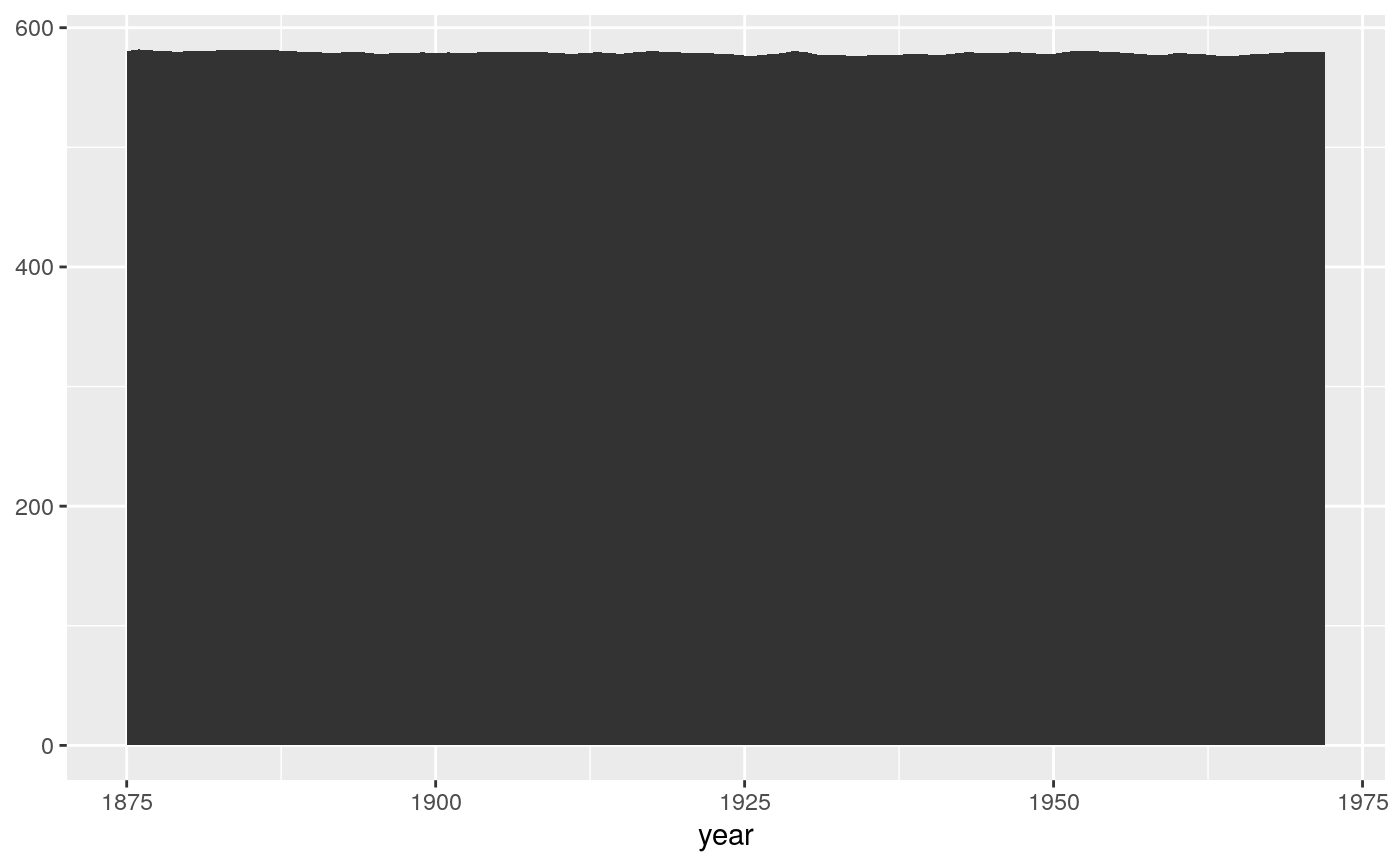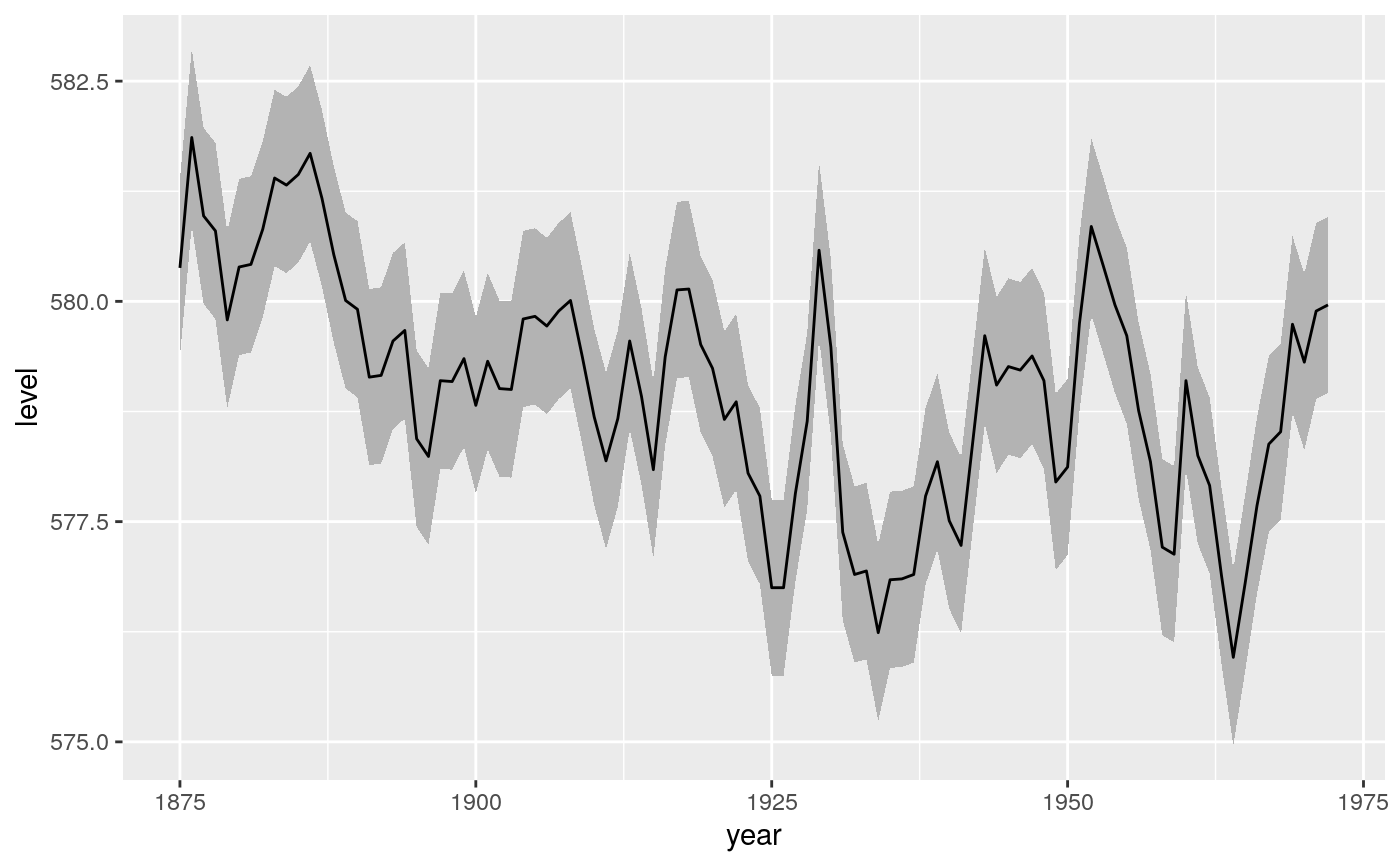For each x value, geom_ribbon() displays a y interval defined
by ymin and ymax. geom_area() is a special case of
geom_ribbon, where the ymin is fixed to 0 and y is used instead
of ymax.
geom_ribbon( mapping = NULL, data = NULL, stat = "identity", position = "identity", ..., na.rm = FALSE, orientation = NA, show.legend = NA, inherit.aes = TRUE, outline.type = "both" ) geom_area( mapping = NULL, data = NULL, stat = "identity", position = "stack", na.rm = FALSE, orientation = NA, show.legend = NA, inherit.aes = TRUE, ..., outline.type = "upper" )
Arguments
| mapping | Set of aesthetic mappings created by |
|---|---|
| data | The data to be displayed in this layer. There are three options: If A A |
| stat | The statistical transformation to use on the data for this layer, as a string. |
| position | Position adjustment, either as a string, or the result of a call to a position adjustment function. |
| ... | Other arguments passed on to |
| na.rm | If |
| orientation | The orientation of the layer. The default ( |
| show.legend | logical. Should this layer be included in the legends?
|
| inherit.aes | If |
| outline.type | Type of the outline of the area; |
Details
An area plot is the continuous analogue of a stacked bar chart (see
geom_bar()), and can be used to show how composition of the
whole varies over the range of x. Choosing the order in which different
components is stacked is very important, as it becomes increasing hard to
see the individual pattern as you move up the stack. See
position_stack() for the details of stacking algorithm.
Orientation
This geom treats each axis differently and, thus, can thus have two orientations. Often the orientation is easy to deduce from a combination of the given mappings and the types of positional scales in use. Thus, ggplot2 will by default try to guess which orientation the layer should have. Under rare circumstances, the orientation is ambiguous and guessing may fail. In that case the orientation can be specified directly using the orientation parameter, which can be either "x" or "y". The value gives the axis that the geom should run along, "x" being the default orientation you would expect for the geom.
Aesthetics
geom_ribbon() understands the following aesthetics (required aesthetics are in bold):
xoryyminorxminymaxorxmaxalphacolourfillgrouplinetypesize
Learn more about setting these aesthetics in vignette("ggplot2-specs").
See also
geom_bar() for discrete intervals (bars),
geom_linerange() for discrete intervals (lines),
geom_polygon() for general polygons
Examples
# Generate data huron <- data.frame(year = 1875:1972, level = as.vector(LakeHuron)) h <- ggplot(huron, aes(year)) h + geom_ribbon(aes(ymin=0, ymax=level))# Orientation cannot be deduced by mapping, so must be given explicitly for # flipped orientation h + geom_area(aes(x = level, y = year), orientation = "y")# Add aesthetic mappings h + geom_ribbon(aes(ymin = level - 1, ymax = level + 1), fill = "grey70") + geom_line(aes(y = level))



